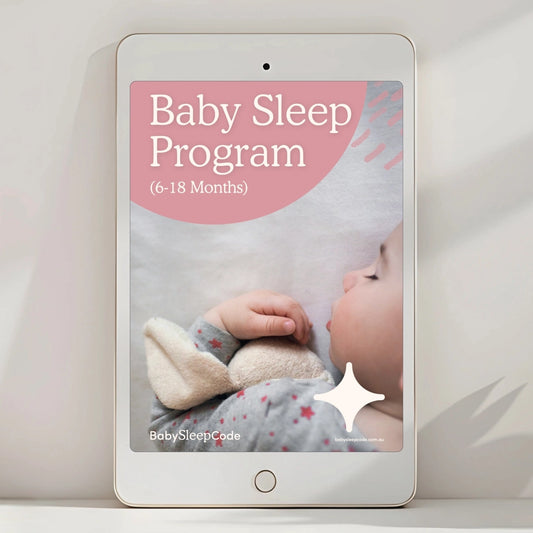As parents, we're faced with countless decisions about how to care for our newborns, and one recurring question is whether “swaddling is good or bad for babies?”.
When first born, babies are thrust into a world brimming with new sensations, many of which they've never encountered in the cozy confines of the womb. From the sudden feelings of cold and hunger to the jarring presence of loud noises, the adjustment to life outside the womb can feel a little alarming at first.
Swaddling, an age-old practice, has resurfaced as a popular technique for comforting and calming infants.
In this article, we explore the historical origins of swaddling, its renewed popularity in modern parenting, its myriad benefits, safe swaddling techniques, and the appropriate timing for transitioning away from swaddling.
Why Do People Swaddle Their Babies?
The tradition of swaddling babies, once widespread in Italy and many parts of Europe and the Mediterranean, experienced a revival in the 1990s. This resurgence was fueled by medical recommendations for parents to place their babies on their backs during sleep to reduce the risk of Sudden Infant Death Syndrome (SIDS). Research suggested that swaddled infants slept more soundly in the supine position, leading to a surge in the popularity of swaddling as a safer alternative to prone sleeping.
Studies have also revealed that swaddling can positively impact infant behavior and sleep patterns. Swaddled babies tend to experience reduced crying, especially among those whose parents reported excessive fussiness. And swaddling has been associated with shorter periods of distress and improved sleep quality, resulting in fewer nighttime awakenings for both infants and caregivers.
How Swaddling Helps Babies Sleep Well
Newborns are born with a strong Moro Reflex, also known as the Startle Reflex. This reflex is easily triggered by a change in light, noise, or a sudden touch or movement, and will sometimes occur randomly. When activated, a baby will experience a sense of free falling, with their arms springing outwards and then back in. This sensation can easily awaken a baby, even from a deep sleep.
Swaddling a baby with their arms by their side not only recreates the snug feeling they experienced in the womb but also helps prevent the Moro Reflex from abruptly waking them.
While swaddled babies will still wake when hungry or uncomfortable, swaddling minimizes premature awakenings, allowing for more restful sleep for both baby and caregiver.
Safe Swaddling Practices
To ensure safe swaddling, it's crucial to adhere to these guidelines:
- Ensure that the swaddle is snug around the shoulders but not too tight around the hips, allowing room for the baby to move their hips and legs freely.
- Use a well-fitting swaddle that won't come loose as the baby moves during the night, ensuring it covers them from below the neck to avoid ever covering their face.
- Always place the baby on their back to sleep and never on their side or stomach.
- Avoid overdressing the baby under the swaddle, and refrain from swaddling if the baby has an infection or fever.
- Opt for lightweight and breathable fabrics to prevent overheating.
- Never swaddle if bedsharing with your baby.
Is Swaddling Dangerous?
When done correctly, swaddling is a safe option that can help calm and comfort a baby. There is no evidence to suggest that swaddling increases the risk of SIDS, as long as the baby is placed on their back to sleep. In fact, limited evidence suggests that swaddling may even reduce the risk of SIDS. However, it's essential to follow safe swaddling practices to minimize any potential risks.
When to Start to Swaddle a Baby?
Swaddling can be initiated from birth, and many hospitals and nurses will swaddle your baby for you while there. If your baby is already over 8-12 weeks there is no need to start swaddling your baby. It’s also important to only swaddle your baby for sleep times, or when needed as a soothing tool, as you want to allow your baby plenty of time out of the swaddle when awake to start practicing new movements and physical skills.
Different Types of Swaddles
There are various types of swaddles available to suit different preferences. Traditional swaddle blankets and wraps, are generally the most affordable and are easily adjusted to suit any baby’s size.
There are also zip up or velcro swaddle wraps and swaddle sacks which are very easy to use and are generally quicker to put on, making them ideal for middle-of-the-night nappy/diaper changes.
There are also swaddles that allow for your baby to have their hands up by their face, and while these are popular, they don’t usually lead to longer sleep periods as they do not as effectively minimise the triggering of the Moro Reflex.
What to Swaddle Baby in the Summer?
In warmer temperatures, it's essential to prevent your baby from overheating while swaddled. Opt for low TOG rated swaddles, such as 0.2 or 0.5 TOG, and dress your baby in a thin layer underneath or just a nappy/diaper, depending on the temperature. Ensure proper airflow in the baby's room, and monitor them for signs of overheating, such as flushed cheeks or sweating.
What if my Baby Doesn’t Like Swaddling?
Placing babies on their backs to swaddle them can sometimes leave them feeling vulnerable and make them upset. Once swaddled securely, gently pick them up and soothe them to help them relax again.
It's important to swaddle them before they become overtired. While it may seem like your baby is resisting the swaddle, especially when they're overtired and thrashing their arms around, it's good to know that young babies don't have control over their arm movements in this way. By keeping them swaddled, you’ll provide them with a sense of security, preventing their own flailing arm movements from startling them.
If your baby is already over 8-12 weeks old and hasn't been swaddled, there may be no need to start now; instead, introduce a baby sleeping bag as an alternative.
When to Transition Away from Swaddling?
The Moro Reflex typically integrates between 2-5 months old and you’ll no longer need to swaddle for sleep times.
If your little one is showing any signs of rolling you’ll need to swap from a swaddle to an arms out sleeping bag immediately to keep them safe. But if they haven’t started rolling yet you can take a little time to ease them through this transition and limit any disruptions to sleep.
By around 3-4 months even if they haven’t begun rolling it’s a good idea to transition them out of the swaddle anyway, as it can start to become a strong sleep association after this age.
Have a little one under 3 months?
Grab our Newborn Sleep Guide, packed with tips on avoiding cat naps, ditching the witching hours, getting great long stretches of night sleep, and much more.
“After implementing this guide at 6 weeks old our son went from waking every 1.5-2 hours at night, to sleeping 7pm-7am with only 1-2 feeds.” Kiara, W
“Having this guide from 3 weeks of age has been a life saver. My baby is now 11 weeks old and has just slept 12 hrs straight 3 nights in a row!” Jacqs, T
“Every new parent needs this guide, not only will your baby be so much happier following the routines, they will sleep well and you will finally get some of your sanity back.” Tara, G“Having this guide from 3 weeks of age has been a life saver. My baby is now 11 weeks old and has just slept 12 hrs straight 3 nights in a row!” Jacqs, T










